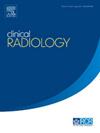经皮冷冻消融治疗四肢血管异常的安全性、可行性和技术成功
IF 1.9
3区 医学
Q2 RADIOLOGY, NUCLEAR MEDICINE & MEDICAL IMAGING
引用次数: 0
摘要
目的回顾性研究经皮冷冻消融治疗四肢血管异常的安全性和有效性。材料和方法从图表中提取异常特征和安全指标,包括根据欧洲心血管和介入放射学会不良事件量表分类的并发症。技术上的成功被定义为在规定的手术次数内达到手术前的目标。临床结果指标包括对报告的症状改善和影像学客观改善的评估。结果8例患者符合入选标准:1 ~ 18岁儿童7例,45岁成人1例,其中女6例,男2例。7例患者有血管畸形,1例有血管肿瘤。最常见的症状包括局部疼痛、肿胀和四肢功能丧失。所有8例患者均取得了技术上的成功。据报道,在一个诊所的随访中,所有8名患者的疼痛都有所减轻。在接受随访成像的患者中,可以看到影像学上病变大小的减少。11次治疗(9%)中发生了一次主要不良事件,导致皮肤水泡,随后在6周内自行愈合;随后的一次会议没有发生任何事件。其他术后不良反应轻微且短暂;所有并发症及术后不良反应在2个月内自行消退。结论对于血管异常患者,冷冻消融似乎是一种有效且安全的治疗方法,特别是对于那些先前手术或硬化治疗无效的患者,正如本研究中8例患者中的7例所见。本文章由计算机程序翻译,如有差异,请以英文原文为准。
Safety, feasibility, and technical success of percutaneous cryoablation to treat vascular anomalies of the extremities
Aim
This retrospective study aims to ascertain the safety and efficacy of percutaneous cryoablation in treating vascular anomalies in the extremities.
Materials and Methods
Anomaly characteristics and safety metrics were extracted from the chart including complications classified according to the Cardiovascular and Interventional Radiological Society of Europe adverse event scale. Technical success was defined as achieving preprocedural goals in delivering cryotherapy to the targeted anatomy in the prescribed number of sessions. Clinical outcome metrics included assessment of reported symptom improvement and objective improvement on imaging.
Results
Eight patients met the selection criteria: seven paediatric patients aged 1–18 years and one adult patient aged 45 years, including six females and two males. Seven patients had vascular malformations and one had a vascular tumour. The most common presenting symptoms included localised pain, swelling, and loss of extremity function. Technical success was achieved in all eight patients. Reduction of pain was reported in all eight patients at follow-up in a clinic. Reduction of lesion size on imaging was seen for patients undergoing follow-up imaging. One major adverse event occurred in 11 treatment sessions (9%) resulting in a dermal blister with subsequent spontaneous healing within 6 weeks; a subsequent session was tolerated without incident. Other postoperative adverse effects were minor and transient; all complications and postoperative adverse effects resolved spontaneously within 2 months.
Conclusion
Cryoablation appears to be an effective and safe treatment in those with vascular anomalies, especially in those previously ineffectively treated with surgery or sclerotherapy, as was seen in seven of eight patients in this study.
求助全文
通过发布文献求助,成功后即可免费获取论文全文。
去求助
来源期刊

Clinical radiology
医学-核医学
CiteScore
4.70
自引率
3.80%
发文量
528
审稿时长
76 days
期刊介绍:
Clinical Radiology is published by Elsevier on behalf of The Royal College of Radiologists. Clinical Radiology is an International Journal bringing you original research, editorials and review articles on all aspects of diagnostic imaging, including:
• Computed tomography
• Magnetic resonance imaging
• Ultrasonography
• Digital radiology
• Interventional radiology
• Radiography
• Nuclear medicine
Papers on radiological protection, quality assurance, audit in radiology and matters relating to radiological training and education are also included. In addition, each issue contains correspondence, book reviews and notices of forthcoming events.
 求助内容:
求助内容: 应助结果提醒方式:
应助结果提醒方式:


